#megarachne
Text
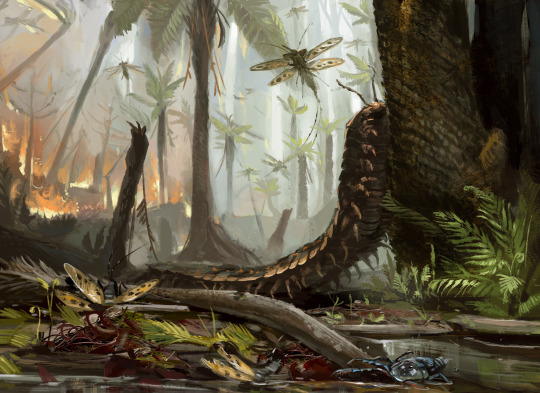
Old illustration from 2018
Arthropleura and friends running away from a carboniferous forest fire
#arthropleura#carboniferous#megarachne#eurypterid#palaodictyoptera#fossil insect#illustrationdigital#science illustration#illlustration#paleo art#paleoart
2K notes
·
View notes
Text
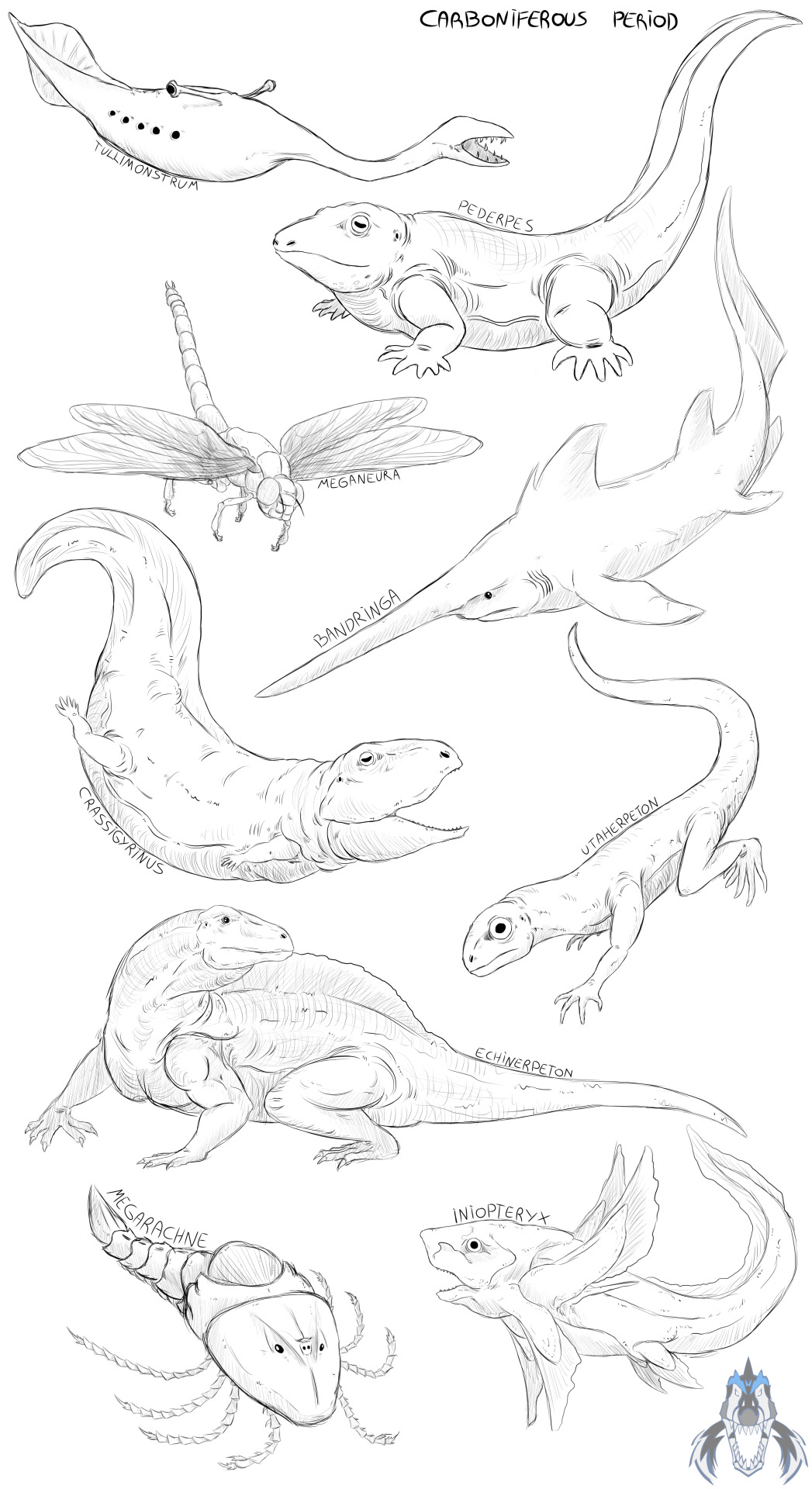
Some carboniferous fellas
#carboniferous#paleozoic#tullimonstrum#pederpes#meganeura#bandringa#crassigyrinus#utaherpeton#echinerpeton#megarachne#iniopteryx#prehistoric animals#carboniferous period#carboniferous animals
39 notes
·
View notes
Text
Megarachne
When studying prehistoric life, it can be difficult without a complete skeleton. this was definitely the case with Megarachne. It was discovered by the paleontologist Mario Hünicken and was described as tarantula like but larger than any spider you have ever seen with a body length of 33.9cm [1] this spider was closer to the size of a house cat then any spiders living currently. You may know this version of Megarachne from the documentary Walking with Monsters where it was originally to be shown as this giant horrifying [2] tarantula on the hunt.
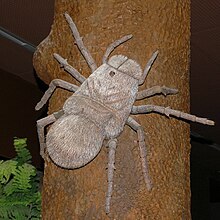
There was speculation about if the giant spider was in fact a spider because of the lack of specific traits that most modern spiders have but the original specimen was held in a bank vault out of the reach of most paleontologists [1]. During the making of Walking with Monsters (2005) a new specimen of Megarachne was found and paleontologists gained access to original specimen. A paper was published with Paul A Selden taking the lead and with help from José A Corronca and Mario A Hünicken (linked bellow [1]) concluding that Megarachne wasn't infact a spider but a Eurypterids (commonly known as sea lobsters).
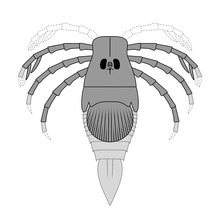
Sadly, Walking with Monsters was already late in production, so it was decided to keep the giant spider version of Megarachne but to instead describe it as a giant primitive spider in the suborder Mesothelae. from my experience most people who know of Megarachne know it as a giant spider which I think is quite sad. Maybe one day a new documentary will be made and Megarachne and its Eurypterids friends can get the spotlight they deserve.
Citations Bellow
------------------------------------------------------------------------------
[1] Selden, P. A., Corronca, J. A., & Hünicken, M. A. (2005). The true identity of the supposed giant fossil spider Megarachne. Biology letters, 1(1), 44–48. https://doi.org/10.1098/rsbl.2004.0272
[2] Childhood Trauma
#paleontology#megarachne#Eurypterid#prehistoric#late carboniferous#prehistory#animal#sea scorpion#arthropods#walking with monsters
51 notes
·
View notes
Text
i feel like arachne would bake meg like cupcakes or make her chocolate covered strawberries or something for valentines day and then meg gives her this (and she cherishes it)

12 notes
·
View notes
Note
this has NOTHING to do with the recent influx of bird questions, i just stumbled across walking with monsters again (and for the first time realised maybe it should have been called swimming with monsters) and wanted to ask your opinion on it - no matter if personal or professional!
personal: I enjoy it nostalgically
Professional: it has aged like milk
horrifically mammal biased
of course "mammal like reptile" is a ridiculously outdated term
doesn't spend enough time on like anything
how dare it act like nothing existed before the cambrian
megarachne is complete bullshit
ignores so many cool critters
we need another paleozoic documentary. hell, we need a bunch. it's longer than the mesozoic and cenozoic put together (just about), and yet it got half the time as either of them in the WW series...
87 notes
·
View notes
Text

My 25 years of palaeoart chronology...
Two quite different murals from 2004. The top painting is on the wall of a lab at the University of Manchester and depicts a Carboniferous coal forest. I'm quite sure it includes the world's first reconstruction of Megarachne as a eurypterid because I received a tip off before a paper redescribing Megarachne as a eurypterid was published. Below is a more playful multimedia mural in the Earth Science department in the University of Bristol. The Bristol mural has gone but I believe the coal forest is still in good condition in Manchester.
#Art#Painting#PaleoArt#PalaeoArt#SciArt#SciComm#DigitalArt#Illustration#Dinosaurs#Birds#Reptiles#Palaeontology#Paleontology
12 notes
·
View notes
Text
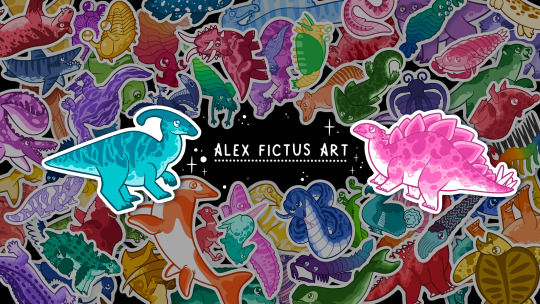
✨Paleo Party Stickers - Patch Notes 1 ✨
Added to Cambrian Era Group: Eldonia
Added to Carboniferous Era Group: Megarachne
Added to Jurassic Era Group: Hybodus, Miragaia, Chungkingosaurus, Gigantspinosaurus, Kentrosaurus, Yi Qi
Added to Cretaceous Ornithischians Group: Wuerhosaurus, Chasmosaurus, Medusaceratops, Centrosaurus, Gryphoceratops, Torosaurus, Atlascoposaurus, Shantungosaurus, Olorotian, Zalmoxes
Added to Cretaceous Saurischians Group: Siamosaurus, Ceratosuchops, Iberopsinus, Vaillabonaventrix, Sigilmassasaurus, Riparovenator, Gigantoraptor
Added to Cretaceous Non-Dinosaurs Group: Repenomamus, Sterpodon
Removed from Cretaceous Non-Dinosaurs Group: Hybodus
Added to Neogene Era Group: Chalicotherium, Deinotherium
Added to Quaternary Era Group: Gigantopithecus
Added to Holocene Era Group: Passenger Pigeon, Alligator Gar, Pelican, Horseshoe Crab, Triops
✨📈Upcoming Queue 📈✨
With pride coming up and the pride cats needing video editing, I may not hit all of these but these are my next priority groups!
Thyreophorans: Jakapil (K), Gastonia (K), Akinacephalus (K), Edmontonia (K), Tarchia (K), Gargoyleosaurus (J), Scelidosaurus (J)
Sauropods: Magyarosaurus (K), Xinjiangtitan (K), Saltasaurus (K), Brontosaurus (J)
Theropods: Saurophagnax (J), Monolophosaurus (J), Metricanthosaurus (J), Albertasaurus (K), Struthiomimus (K), Incisivosaurus (K), Atrociraptor (K), Bambiraptor (K), Maip (K)
Pterosaurs: Rhamphorhynchus (J)
Ediacaran: Mawsonites, Spriggina, Dickinsonia, Charnia
Paleozoic misc: Cyclida (C), Goniatites (C), Bulbasaurus (P), Diictodon (P)
Mesozoic misc: Juramaia (J), Thalattoarchon (T), Nothosaurus (T)
Cenozoic misc: Dinictis (Pg), Argentavis (N), Pelagornis (N), Toxodon (N), Nuralagus (N), Teratornis, (Qu), Platygonus (Qu), Tuatara (Living Fossil), Tanuki (Living Fossil)
This was a pretty big update! Next sticker patch notes will probably be the upload of the pride cats! If you have any recommendations or requests for the paleo party, send me a message!
All pride cats have been decided and I'm about to start printing them all for my May shop update on Friday May 3!
Date: April 2, 2024
15 notes
·
View notes
Text

A scene from the carboniferous
prints available!
https://www.inprnt.com/gallery/starfielddomicile/after-the-storm-the-carboniferous/
Species depicted:
A couple of Hibbertopterus wading through the shallows,
a shy Arthropleura hiding under the debris,
a young Eryops, scurrying off with a piece of:
the enormous lungfish Rhizodus,
Some generic orthocones and nautiloids,
a beached xenacanthus,
the spider-like megarachne,
a few mazothairos,
a sneaky pulminoscorpius,
And of course everyone's favorite Meganeura, carrying an unlucky tullimonstrum
#paleoart#paleontology#prehistoric#animals#bugs#insects#zoology#ancient#paleozoic#science art#creatures#critters#extinct#lifeforms#botany#amphibian#fish#mollusks#invertebrate#blender3d#procreate#fossil#fossil fuel#swamp#bog#marsh#soggy#moist#wetlands#I wish I had a time machine
82 notes
·
View notes
Text
Related to that, I think its frustrating that its still like, taken as an assumption basically everywhere that “arthopods were big in the carboniferous because of higher oxygen”, when there isn’t really any clear evidence of this, and most of the examples are just wrong. Arthopleura were already big in the visean, when oxygen levels were at or below where they are today (although i have to say the research currently available about prehistoric oxygen levels is very inconsistent), griffinflies and palaeodictyopteroida lasted till the end of the Permian, surviving oxygen levels probably lower than today, and importantly the largest mass estimates for the biggest griffinflies would only put them at around the same size or slightly heavier than the largest beetles alive today.
I feel like, rather than anything to do with oxygen, the reason that these insects were able to get so large was because of the lack of any other flying animals. Notably, titanopterans, which survived into the triassic, actually reached their largest size during the carnian stage of that period, despite oxygen levels then being at their nadir, nearly half of what they are today. By comparison, at sea level, during the carnian, it would have had the same oxygen levels as standing at 12,000 feet today. And yet there were giant flying (or at least semi-flying) insects flourishing in this environment! I think the real answer to this mystery came from the same time period though, because shortly after the titanopterans reached their peak the first pterosaurs emerged, and from then on essentially all niches for mid sized aerial animal would be taken by pterosaurs, and later birds then bats. After the end of the triassic wiped out the titanopterans there just weren’t niches for giant flying insects to move into the same way there had been before.
And without Arthopleura or the giant flying insects, where does the “bigger bugs cause more oxygen hypothesis” have any basis in data? Megarachne was an aquatic eurypterid, not a giant spider, and actually quite a bit smaller than the possibly semi-terrestial eurypterid Hibbertopterus, which lived during times of low oxygen (Hibbertopterus possibly grew up to 8 feet in length, and if so could’ve been the largest arthropod ever). There were some giant scorpions in the early to mid carboniferous and the late devonian, but as far as i can tell they mostly went extinct before the oxygen levels were higher than they are today. The stem cockroaches could get big, sure, but no bigger than the biggest cockroaches today and smaller than many living beetles. So what’s left? It feels like a theory without much evidence behind it, and a decent amount of evidence against it.
I imagine, if for some reason birds and bats (and the other gliding amniotes that might otherwise take their place) went extinct, there is no reason why we couldn’t see giant flying insects evolve again in another few millions years. Another Arthropleura I think would be a bit more complicated though.
2 notes
·
View notes
Photo
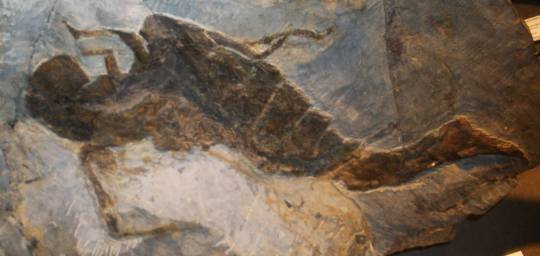


The biggest arthropod ever
This phylum is a large one, including a wide diversity of creatures from crabs and spiders to insects, all based on the idea of a chitinous carapace and lots of wiggly legs. They have been around since the Cambrian, diversifying ever since. The Eurypterids (aka sea scorpions, from the Greek for wide wing) were an order of extinct ancestors of arachnids, and some of them were the biggest predatory bugs ever, reaching up to 2.5 metres long. They appeared in the Ordovician and thrived in warm shallow seas and lakes right up until the great dying at the end Permian mass extinction (460-248 million years back). They have been found on all the continents.
There are a couple of dozen families in the order, most of them bottom dwellers, though a few land or amphibious species have been found. The first image is the largest predatory bug ever, at 2.5 metres long, found in the German Rhineland and dating from some 390 million years back. The second depicts Megarachne servinei, initially misidentified as a spider. It was found in Argentina, and is some 298 million years old. The third is a reconstruction of the type specimen of the order, Eurypterus, from the Smithsonian National Museum of Natural History exhibition.
Loz
Image credit: 1 Ghedoghedo 2 Hectonichus 3 Ryan Somma
http://bit.ly/1JoaNxv
https://www.sciencedirect.com/science/article/abs/pii/S003101820700291X
#Eurypterids#sea scorpion#fossil#fossils#fossilfriday#arthropod#the earth story#science#megarachne#eurypterus
258 notes
·
View notes
Text
Wikipedia article of the day for March 25, 2020

The Wikipedia article of the day for March 25, 2020 is Megarachne.
Megarachne was a predatory freshwater arthropod of the order of eurypterids, often called sea scorpions. Two fossil specimens of the genus have been discovered, in San Luis, Argentina, in deposits of Late Carboniferous age from the Gzhelian stage. Megarachne ("great spider") was initially misidentified as a spider. With a body length of 54 cm (1.77 ft), it was a medium-sized eurypterid, similar to others within the Mycteropoidea, a rare group known primarily from South Africa and Scotland. The mycteropoids evolved a specialized method of feeding referred to as sweep-feeding, raking through the substrate of riverbeds to capture and eat smaller invertebrates. Due to their fragmentary fossil record and similarities between the genera, Megarachne and two other members of its family, Mycterops and Woodwardopterus, have been hypothesized to represent different developmental stages of a single genus.
0 notes
Photo

The Wikipedia article of the day for March 25, 2020 is Megarachne.
Megarachne was a predatory freshwater arthropod of the order of eurypterids, often called sea scorpions. Two fossil specimens of the genus have been discovered, in San Luis, Argentina, in deposits of Late Carboniferous age from the Gzhelian stage. Megarachne ("great spider") was initially misidentified as a spider. With a body length of 54 cm (1.77 ft), it was a medium-sized eurypterid, similar to others within the Mycteropoidea, a rare group known primarily from South Africa and Scotland. The mycteropoids evolved a specialized method of feeding referred to as sweep-feeding, raking through the substrate of riverbeds to capture and eat smaller invertebrates. Due to their fragmentary fossil record and similarities between the genera, Megarachne and two other members of its family, Mycterops and Woodwardopterus, have been hypothesized to represent different developmental stages of a single genus.
0 notes
Photo
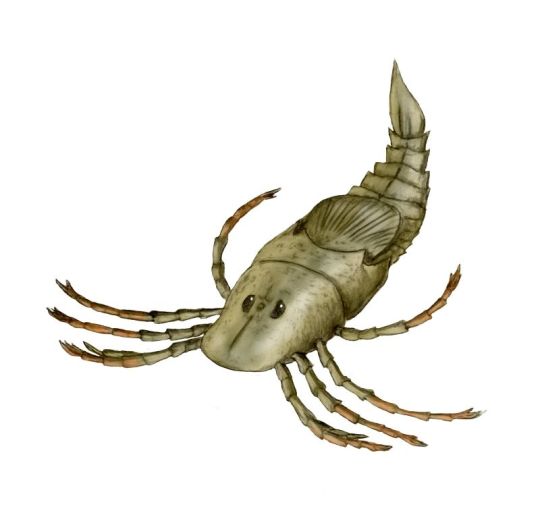
Artistic reconstruction of Megarachne servinei.
26 notes
·
View notes
Photo
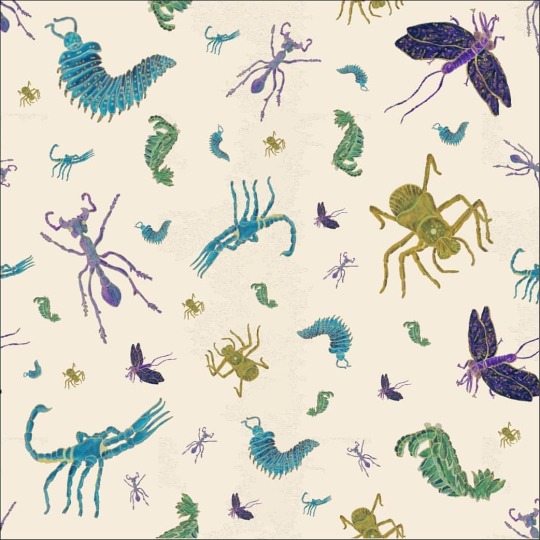
Estampado de insectos prehistóricos. ______________ Pattern of prehistoric insects. #prehistoria #prehistory #insectos #inscects #ilustraciones #patrones #arthropleura #megarachne #pulmonoscorpius #titanomyrma #anomalicaris (en Bogotá D.C.) https://www.instagram.com/p/B4jZs2MAqIw/?igshid=14py8oxj2pghd
#prehistoria#prehistory#insectos#inscects#ilustraciones#patrones#arthropleura#megarachne#pulmonoscorpius#titanomyrma#anomalicaris
0 notes
Photo

1.7.19
this is my spider-sona, megarachne! they’re a good dino dude and will be doing digital art of them soon. and also drawing more in general.
#spider-man#into the spiderverse#spidersona#traditional art#spiderverse#marvel#oc#ch: megarachne#january 2019
12 notes
·
View notes